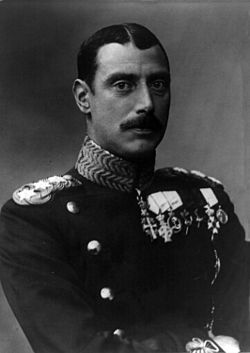Royal Crisis (Lyngaard)
The Royal Crisis (Nørdspråg: Kongelig Krise) was a major Political Crisis in Lyngaard that lasted from 1961 until 1967. The cuase of the crisis was the revelation of Prince Hans Erik's involvement with the Far-Right Kultur og Tradition group. The group had been implicated in several Anti-Immigrant, Anti-Communist, and Anti-Union attacks since the mid 1940's. The media scrutiny placed on Prince Hans Erik also helped to uncover illegal banking praticies he was involved in as a board member of Kongelig Investeringsbank. This would come to a head when bank official and co-conspirator Rasmus Mortensen was found dead, hung at the Sort Munk Bridge in 1966. Several members of both Kultur og Tradition and the Royal Investment Bank were implicated in the killing. Victories for the Socialist Labor Party of Lyngaard in 1963 and again in 1967 would eventually force Hans Erik to abdicate his claim, making the way for his uncle King Gustav Fredrik II to be elected king by the Regency Council in 1967.
Background
Monarchy and the Constitution
Since the End of the Second Lyngaardian Civil War the monarchy had been left as a ceremonial Head of State. While the Republicans were defeated, Republicanism remained a prominant political trend. Culminating in the Grand Compromise that allowed for the passage of the 1890 Lyngaardian Constitution. The Monarchy had transitioned into a symbolic and obstensibly apolitical institution which gave political power to the Lundsthing. The constitution expressly limited the political influence the monarchy would have. The monarchy could no longer endorse candidates, it could no longer vocally endorse or criticize governemnt policy, nore could it talk to politicians without it happening within an open forum.
One thing that the 1890 Constitution formalized was the existsance of the Regency Council. Traditionally an ad hoc assembly of the Royal Family, Church Bishops, The Army, and invited guests. The Regency Council would advise the Royal Family on who should succeed the king at the onset of their death. With the 1890 Constitution established the Regency Council as the body who would elected via 2/3rds majority the Monarch after the Death or Abdication of the previous Monarch. a total of 30 seats. 15 seats are appointed by the Monarch, 5 seats are occupied by Bishops of the Church, 3 Seats for the Military, 3 Seats for reprasentatives of the Royal Bank of Lyngaard, and 4 Seats elected by popular vote for life terms.
The constituion also stipulates that the Lundsthing has the power to Veto the Election of a Monarch by the regency Council, however that was consitered more a formality, with the Lundsthing never attempting to block a vote from the Regency Council until 1963.

